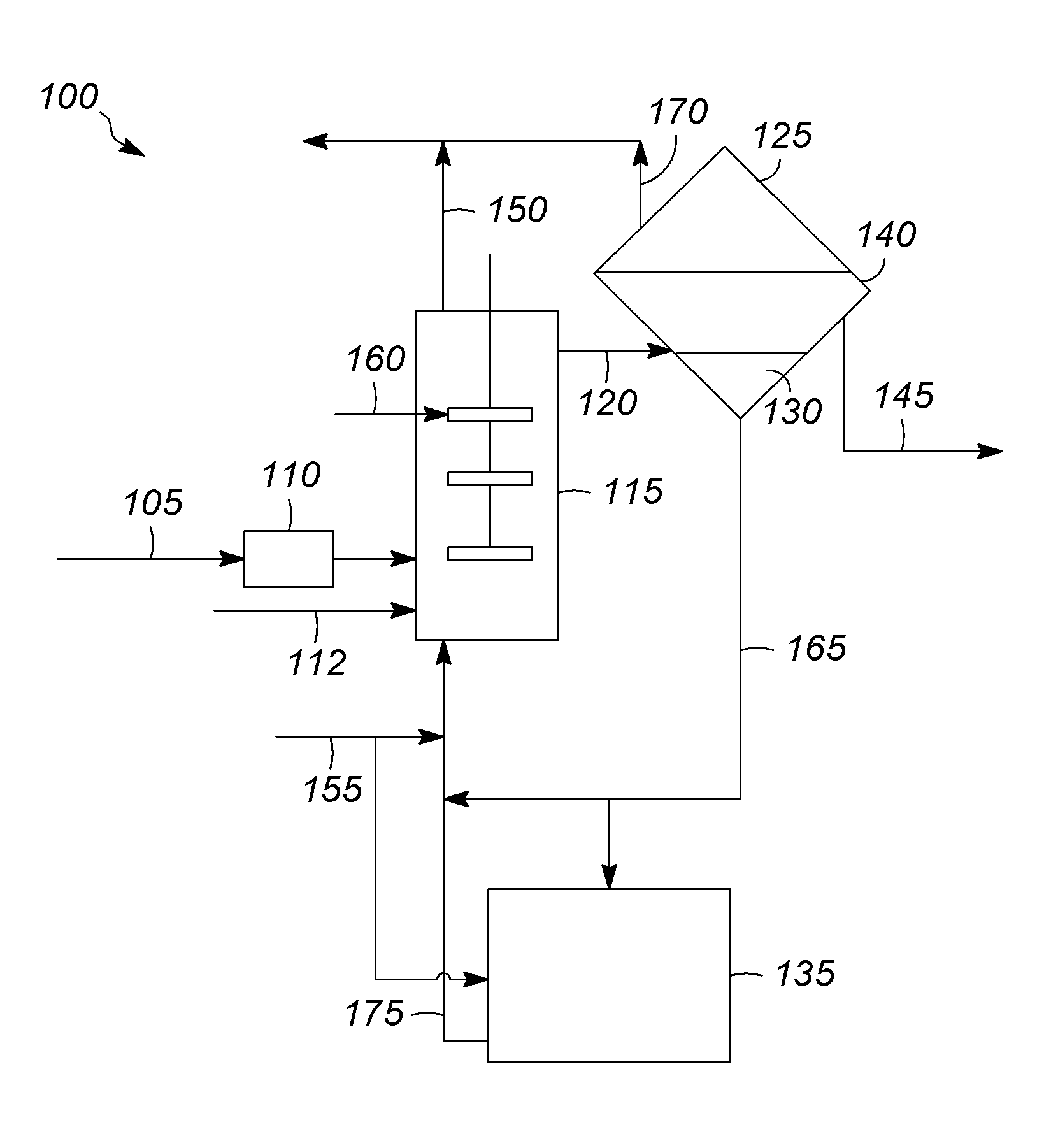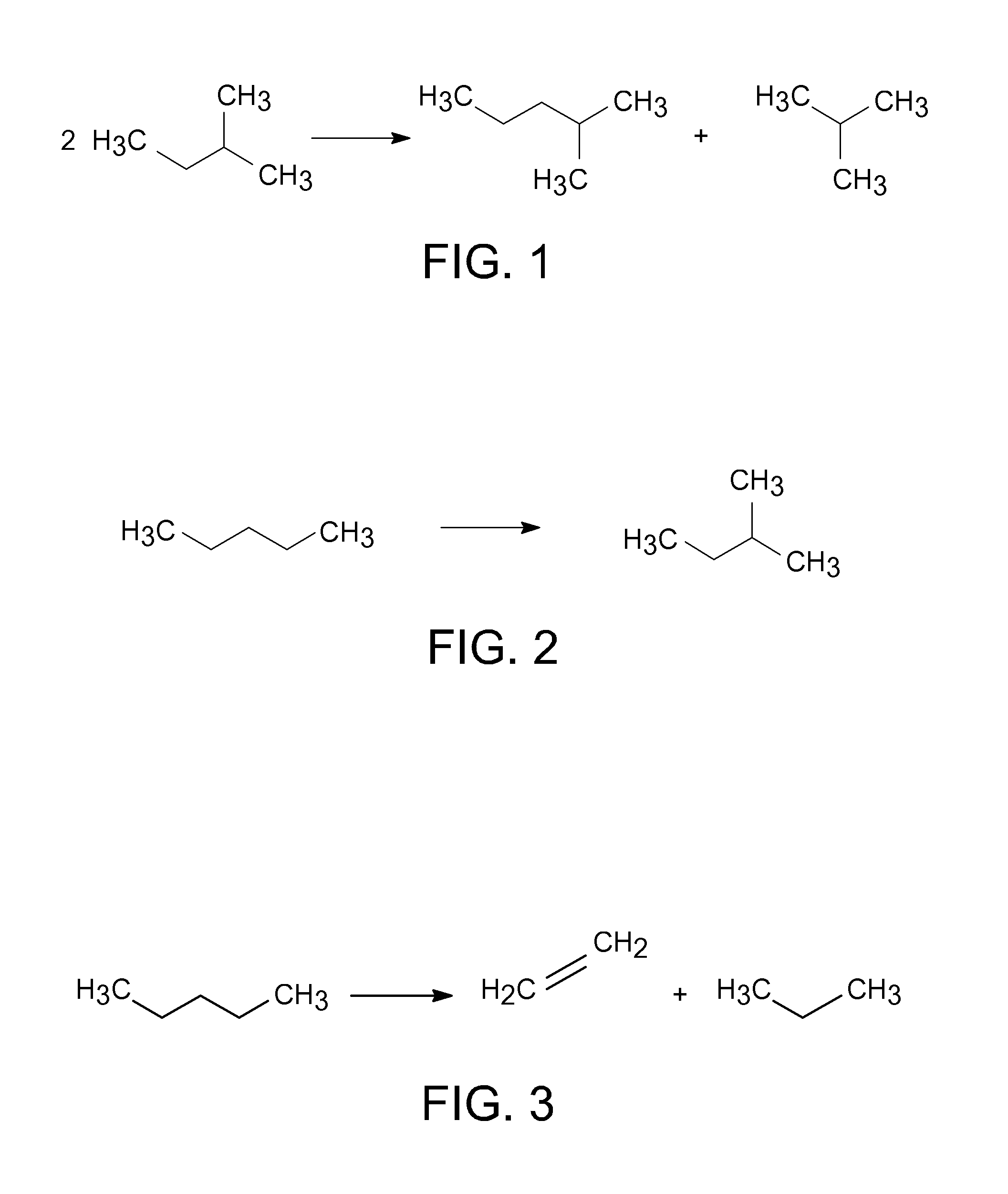Catalytic disproportionation of heptane using ionic liquids
a technology of heptane and ionic liquid, which is applied in the direction of hydrocarbon preparation catalysts, hydrocarbon by saturated bond conversion, organic chemistry, etc., can solve the problems of csub>5, hf utilization, and oversupply of refiners with csub>5
- Summary
- Abstract
- Description
- Claims
- Application Information
AI Technical Summary
Problems solved by technology
Method used
Image
Examples
example 1
Experimental Set Up
[0092]The set-up included a 300 mL autoclave equipped with a mechanical stirrer, pressure gauge, thermocouple, dipleg, rupture disc and valves to introduce the feed and withdraw an aliquot for GC analysis. The rupture disc vented to a knock out pot. The house nitrogen passed through a pressure regulator to a high surface sodium column and was then split: feeding to the charger for feed introduction or to a line for various uses (i.e., 2-methyl-2-chloropropane / C5P introduction). The dipleg was constructed such that the height positions it in the paraffin layer. Upon opening the valve, the withdrawn paraffin layer passed through a column of silica, to the GC valve and then through a metering valve into a waste container. The reaction mixture was analyzed using the ASTM UOP690-99 method. The Sisoparaffin was calculated by summing the wt. % contribution of the C4-C8 isoparaffins that are separable using the ASTM UOP690-99 method, but does not include the contributions...
example 2
Synthesis of [(nBu)3P(Hex)][Al2Cl6Br]
[0093]An oven-dried round bottom flask was charged with [(nBu)3P(Hex)][Br]. The material was attached to a rotary evaporator and dried under vacuum at 110° C. for at least 14 h. The dried [(nBu)3P(Hex)][Br] was immediately brought into a nitrogen glovebox and stored there. A synthesis was achieved by massing 17.589 g (47.88 mmol) of [(nBu)3P(Hex)][Br] into an oven-dried flask equipped with a stir bar in the nitrogen glovebox. To this was added 12.775 g (95.81 mmol) of AlCl3 at ambient temperature. The mixture was stirred and the solids slowly reacted over the course of one week to produce a homogenous pale-yellow liquid.
example 3
Synthesis of [1-butyl-1-methylpyrrolidinium][Al2Cl7]
[0094]An oven-dried round bottom flask was charged with [1-butyl-1-methylpyrrolidinium][Cl]. The material was attached to a rotary evaporator, dried under vacuum at 110° C. for at least 14 h, and then sealed under vacuum with a connecting adapter. The dried [1-butyl-1-methylpyrrolidinium][Cl] was immediately brought into a nitrogen glovebox and stored there. A synthesis was achieved by massing 57.14 g (322 mmol) of [1-butyl-1-methylpyrrolidinium][Cl] into an oven-dried flask equipped with a stir bar in the nitrogen glovebox. To this was added 83.93 g (629 mmol) of AlCl3 at ambient temperature and the mixture stirred. The solids reacted to produce a homogenous liquid.
PUM
| Property | Measurement | Unit |
|---|---|---|
| residence time | aaaaa | aaaaa |
| wt % | aaaaa | aaaaa |
| temperatures | aaaaa | aaaaa |
Abstract
Description
Claims
Application Information
 Login to View More
Login to View More - R&D
- Intellectual Property
- Life Sciences
- Materials
- Tech Scout
- Unparalleled Data Quality
- Higher Quality Content
- 60% Fewer Hallucinations
Browse by: Latest US Patents, China's latest patents, Technical Efficacy Thesaurus, Application Domain, Technology Topic, Popular Technical Reports.
© 2025 PatSnap. All rights reserved.Legal|Privacy policy|Modern Slavery Act Transparency Statement|Sitemap|About US| Contact US: help@patsnap.com



